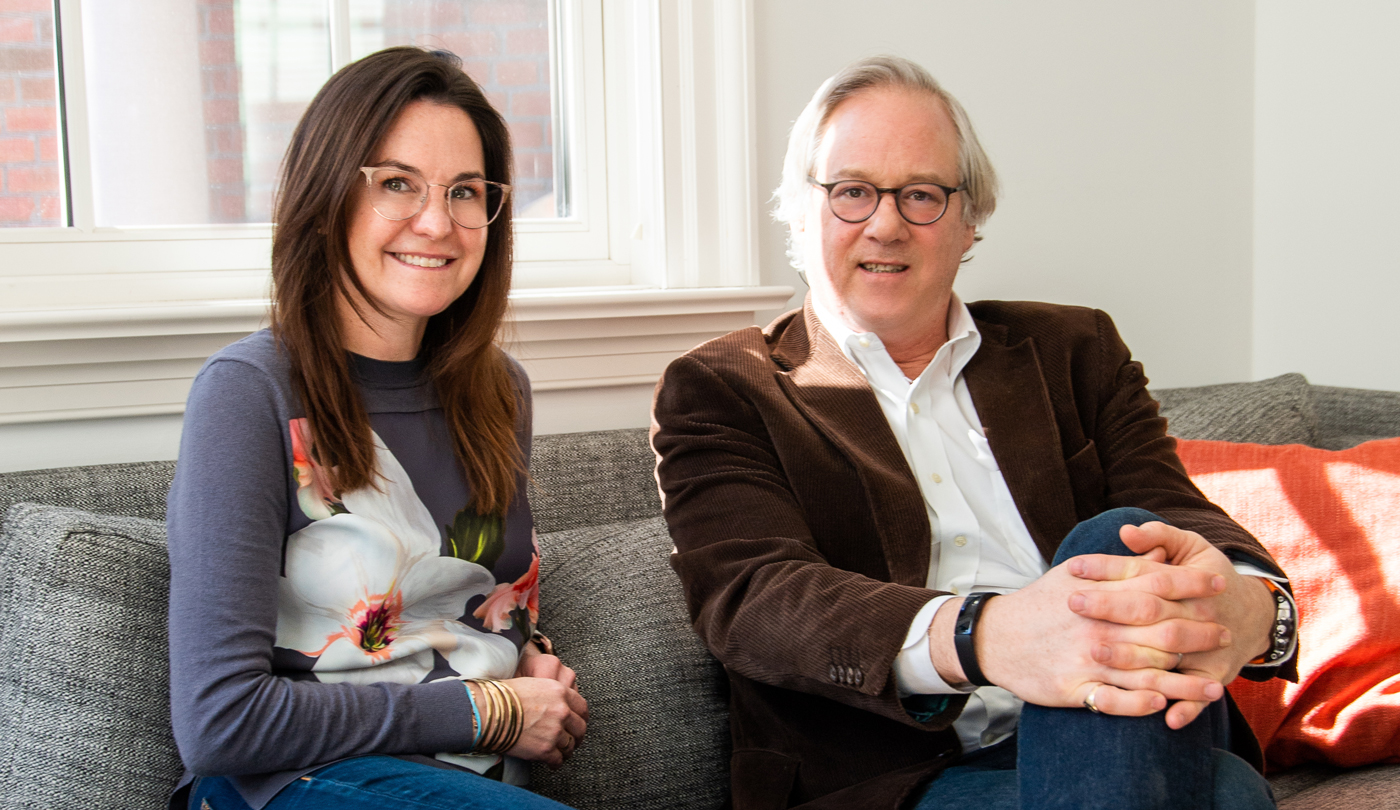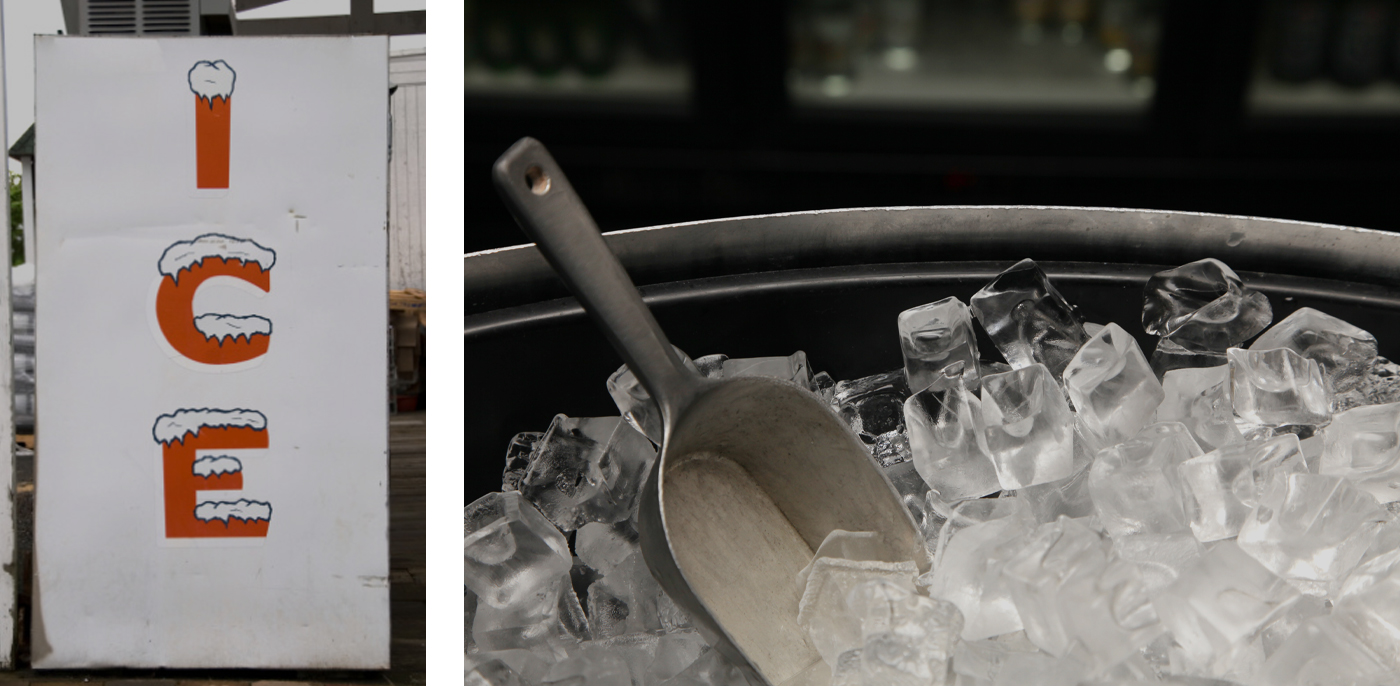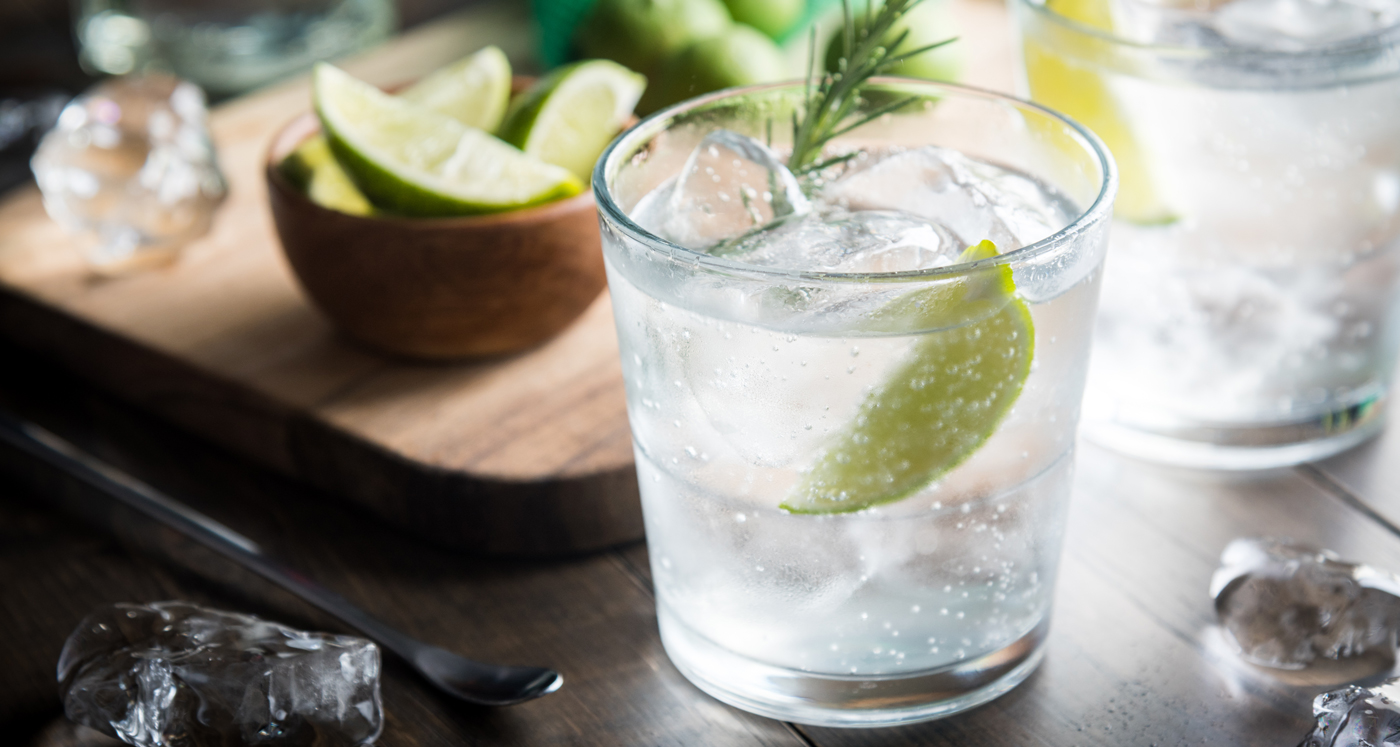32 Degrees Fahrenheit is the freezing point of water. But, as a company name, 32 Degrees sparks curiosity and a bit of a head-scratch. And that’s the point.
According to business partners Peter Drummond and Claire Lamont, they want you to ask them why 32 Degrees is the name of their venture, which is aimed at thoroughly disrupting our ideas, attitudes, and behaviours around ice consumption and cooling technology.
Claire Lamont is from South Africa. She came to Canada about 20 years ago and her background is in marketing. Lamont is the founder and CEO of Smak, specializing in brand purpose, experiential marketing and employee engagement. She is co-founder of 32 Degrees.
Peter Drummond was born in Montreal. He started his career as a designer but this quickly evolved into strategy and strategy planning—he has been a strategy consultant for the last 25 years. He is a business strategist at his firm PSD+G Strategy Group, Adjunct Professor at Queen’s University and co-founder of 32 Degrees.
Drummond and Lamont met through a business opportunity. Drummond noted that over the last few years, most of his clients have been purpose-driven; focused on sustainability and social impact.
It was a chance conversation and a strange question that set them on an unlikely quest.
A DEFINING MOMENT
Lamont hosted a birthday party for herself. She got big coolers, went to the gas station and grabbed bags of ice to fill these coolers. It was a good old time. The next day Lamont went to clean the coolers out and she found herself dumping litres upon litres of drinkable water down the drain. It was “just this light bulb moment.” The 24hour journey—ice from the gas station: there’s a freezer at the gas station using electricity to keep the ice-cold, how did it get there? Who made it? How is it processed? And when you think about your bags of ice, the cost per bag, whatever the cost may be: “I paid for it, and then I’m throwing the water away,” says Lamont. She was left with questions and a problem to solve.
The first person she thought of was Drummond.
“Hey Peter, let’s go for a drink.” The two were sitting in an oyster bar and Lamont posed the question: “What do you think about ice?”
They had a hearty discussion. Lamont talked about exactly what had happened on her birthday and about the user experience of ice being “kind of awful.” They considered the sustainability piece, looking at the oyster bar and all the ice underneath the oysters. “And it’s really just there for aesthetics. The oysters could be sitting in the fridge,” says Lamont.

Claire Lamont and Peter Drummond. Photo by Stacey Newman.
ICE IN FOODSERVICE IS A BEAST OF A PROBLEM
PULL A LITTLE STRING, SOMETHING ELSE UNRAVELS
“We’re looking at the oysters and the ice, they have a big machine pounding out crushed ice,” says Drummond.
PROFITS V. SOCIAL IMPACT
32 Degrees was conceptualized around solving this problem, conducting research, conducting surveys, working within academia and real-world applications to solve a problem that no one seems to be talking about. Solving the problem of ice/water wastage includes rethinking water usage, our processes around ice consumption, and democratizing cooling and ice-making technology, which has life-altering implications for societies in every corner of the world.
Along with the collective good that comes of solving these problems, 32 Degrees aims to be commercially successful. “A lot of people think that we’re not for profit. I’m like, ‘No, no. We’re a for-profit business,’ says Lamont.
CURIOSITY IS THE MOTHER OF INNOVATION
Lamont and Drummond began 32 Degrees as a problem-solving venture. They sat at a literal round table with three colleagues over two full days. There was an ‘Everest’ of information before them. It began with identifying the two largest commercial applications for ice and cooling (food and hospitality, and medical institutions). Poke, poke, poke—they explored everything they might consider around the problem of ice. “It took us a couple of years in Queen’s working with students to really hit the Aha! Moment. In the beginning, we were really thinking about the front of house use of ice. But, before you even think about front of house, much of the water is being wasted before a cube is even made. There’s the problem,” says Drummond.
ICE, ICE BABY
The team conducted a life cycle analysis of water in an establishment. From the moment it hits a building, what’s the process? What are the steps? What are the cost structures, what are the barriers, what are the technologies? And this includes human factors and logistics when, say, the bar is on the third floor and the ice machine is in the basement. “We know how many times somebody’s taking that up, so we know the labour cost to carry the whole bucket up to the third floor. We know the labour cost to clean the machine out and electrical costs,” says Drummond.

DID YOU KNOW?
160,000 litres of water are used to create ice in an average ice-making machine. Over 120,000 litres of that goes right “back to the lake.” And that’s not including water-cooled machines—outlawed here in Canada, but around the world, there are still tons of water-cooled ice machines. So, it’s taking water to cool the compressor. Drinkable water is wasted, not to mention the energy costs.
When you start adding things up, you are looking at about 50 per cent of water being wasted in the foodservice space. Drinkable water.
LOOKING AT THE NUMBERS
In a recent study on soda fountains distributing ice for beverage consumption a couple of new things were discovered:
- 32 Degrees thought that the newest machines would be a lot more water-efficient. This was not the case.
- The ice runoff (waste) on average: 30 litres of water a day.
- There is still water runoff from the melting ice in the ice well that they have not been able to measure. Quick math on average: these ice machines are wasting 30 litres of water a day, 10,950 per year before ice is even produced. If you think about the average number of restaurants in Canada and one ice machine per, you would be looking at 1,067,625,000 litres of water wasted per year in Canada and these are modest numbers and based on restaurants that could have bigger different models of ice machines.
HUMAN BEHAVIOUR IS COOL
Our behaviours, habits and attitudes around ice don’t make sense. The moment we walk into a food or drink establishment, we are presented with a glass of water, and 90 per cent of the time there’s ice in it. Are we drinking that water, are we using it, do we need it? It’s not only about disrupting technology, it’s about valuing water and changing our attitudes and habits around water consumption. It’s about our attitudes and awareness of the need for water preservation. There is high waste from the processes around ice and cooling. Drummond and Lamont are pretty convinced they understand the problem, but the remaining challenge is parsing the problem out as a cooling issue or an ice issue.
The majority of water waste is wasted before the customer even sees any ice cubes.

THE ANSWER(S) ARE IN THE QUESTIONS
And, it’s most likely there are multiple answers to this problem. The ice in our freezers is typically cloudy, and this is just fine. So why’d clear ice become the norm in foodservice? Clear ice is created when minerals and air are removed from the water at freezing. This in ice machines is done by slowing down the production of ice by running water over the trays creating clear ice. Ice manufacturers use this as a selling feature for clear ice. 32 Degrees did a study of consumer want and need over clear vs cloudy (ice made by freezing water e.g. your ice tray in the freezer). Everyone was served their first beverage in a bar setting with cloudy ice and then surveyed on their preference of clear vs cloudy ice. Some of the results:
- All participants did not know there was a difference.
- Participants with a preference for clear ice stated it was only for a “special drink” e.g. scotch or high-end bar environment.
- All participants once learning about the water waste off of clear ice said they would prefer knowing their ice was not creating water waste. It’s actually interesting because when you look at these ice makers and manufacturers specifically talk about why they have to distill it, they say for ‘high quality,’ to ensure a consumable food product is safe. But this is not actually an explanation for the clarity of commercial ice. There is the health halo around the word ‘purity’—it’s being used as a means of explaining away why commercial ice makers won’t change their ice making in order to preserve the longevity of the machine—regardless of the cost and wastage. So, the waste is ‘justified.’
GAINING CLARITY
Clear ice in bars and restaurants has become the norm, not because it’s the best or even better, but because commercial ice making simply hasn’t evolved.
RESEARCH AND DEVELOPMENT, AND MARKETING
Generally, we can all walk into any bar, any restaurant, and any hotel we want to see, feel, and speak with. This was the starting point for the researchers’ qualitative studies. Then the team completed a quantitative study. Lo and behold, the same numbers came back. An important answer solidified from the studies: there is high waste from the processes of ice-making and cooling in food and beverage establishments. At this point, Drummond and Lamont and their team felt they had successfully identified the problems, but they still didn’t know if it is a “cooling issue” or an “ice issue.”
“We’re still having [these] conversations…And maybe there’s multiple answers to this problem,” suggests Drummond.
FUTURISM IS REVOLUTIONARY
32 Degrees today has its team working on multiple solutions and ideas: figuring out a new ice machine that creates zero water, and a second group figuring out cooling without water. The teams are employing different technologies, different chemicals, and different interactions!
“One of the things we did with mechanical students two years ago is they created a way to cool a cup of apple juice or water or white wine using compressed air. So, in four or five seconds, it goes from 9 degrees to 4 degrees Celsius,” says Drummond of one of the team’s experiments, which used almost no electricity and zero water. At 32 Degrees they’re convinced there’s a pathway to cooling drinks without ice.
GLOBAL IMPLICATIONS
In terms of context, 32 Degrees is looking at essentially North American establishments. But certainly, there are global implications for affordable, energy-efficient cooling technology explains Lamont.
The same technology that allows for the luxury of sitting and drinking a sustainably cooled gin and tonic on a patio is relevant too and desperately needed in developing countries that don’t have access to accessible, affordable cooling technology, nor to clean, potable water.
“If we could find really interesting solutions that allow us to still muster up a cold beverage, they might be able to lend and yield to things that are much bigger problems,” says Lamont.
These ideas have raised a few paradoxes for Drummond and Lamont. As they are talking about developing countries, they also ask us to look at California, Arizona, or Mexico. There are First Nation territories here in Canada/Flint Michigan in our backyard and the pressure these regions are under due to the lack of water—and the broader implications for North American supply chains and trade—is immense.

WHY DO WE TAKE WATER FOR GRANTED?
A large segment of the world’s population has little to no ready access to potable water. Think about that. Those of us who have access to water, who live near freshwater or have water infrastructure in our regions, do we take water for granted? Without question. Drummond offers an anecdote about 32 Degrees’ research; when he has conveyed the findings to an audience of leaders of business or academic institutions, he’s been met with questions like: “So? Water goes back to Lake Ontario,” or “Well, there’s no problem with water. We’ve got lots of water.”
“It’s water in, water out,” says Lamont. Once the simplicity of the question is spelled out, the importance of these questions and this research becomes evident. People are talking about climate change, about how we’re running out of water around the world. “Canada is so lucky and we’re so rich,” says Lamont. But then she explains the lengths she and Drummond and their team members must go to identify that these problems even exist. We often associate the phrase ‘thinking locally’ with sustainability, but there is a downside to this mentality in some contexts, because it means that people are thinking only locally, focused on immediate impacts to their lifestyles. When it comes to the advancement of technology in some sectors, we must continue to think globally. Lamont suggests that if she and Drummond can continue to convince the naysayers in their own backyard, it will be much easier to nurture a global conversation.
ASSESSING, DEVELOPING AND REBUILDING OUR IDEAS ABOUT EQUIPMENT
Says Drummond, too many equipment manufacturers today are chasing the one green thing that they can hang their hats on. In the least, this results in greenwashing the results of equipment testing to suggest an appliance, for example, is far more efficient than it is under normal working conditions. The takeaway: if you truly care about purchasing and using efficient and sustainable equipment, make sure to read the fine print when buying into “green” technology.
At 32 Degrees, they recognize how difficult it is in our world today for restaurant owners to suddenly turn around and say, “Those ice machines are really bad for the environment. I’m just going to chuck it out and then buy this new equipment that’s going to cool everything.” It’s not as easy as that…yet.
CHANGE IS INCREMENTAL, AND POSSIBLE
How do we change human behaviour in food and beverage establishments? Where does an independent restaurateur begin?
Lamont offers up a simple challenge to every independent restaurant owner or operator: Don’t automatically put out glasses of water with ice!
INSTEAD, DO THIS
- Ask people about ice. Do you want ice? How much ice do you want? Don’t put ice into water glasses. Keep your wine in the fridges.
- Don’t have an ice bucket (it’s outdated anyway).
- If you’ve got oysters, rethink how you merchandise your product without having to use all that ice as it is just water waste at the end of the night (this has always been a style thing and not a food safety thing. The fridge is actually safer).
- If you’ve got plants in your establishment, take your ice out of the ice well and throw it into your plants. There are many ways to upcycle ice.
“Through our conversations with university students, typically fourth year, and the stories they tell us of nights of going to bars in Kingston… [The students] are going up and asking for their gin and tonics and literally putting their hands in, throwing the ice onto the floor, and drinking their gin and tonics. So why didn’t the bartender ask, ‘do you want ice or no?’”
Drummond concedes that it is also the expectations of a very profit-driven but precarious industry driving this thinking and the subsequent behaviour of managers. “If you’re at a movie theatre and you take the ice out, you want to fill up your pop, that’s more cost to the theatre owners,” he says.
32 Degrees is figuring that out, too. Understanding establishment-based human behaviour is kind of the holy grail of the ice/cooling problem.
“We’re habitual. That’s the problem with humans,” says Lamont. And we build our societies and our institutions around our habits. Whether it’s how a bartender’s pouring a cocktail or the expectation of an ice machine on every floor of a hotel.
Change is tough for human beings, it seems. Even when it makes sense. In restaurants, not only is managing ice laborious and messy, it also presents issues around sanitation and staffing. “If you actually start talking to people, the experience around ice isn’t great. I used to work at a restaurant. I hated when I had to go and fetch the ice. I hated it. You’ve got to take this bucket that’s dirty, and you’re literally scooping with a scoop that’s been sitting in this ice for God only knows how long. You scoop it into this bucket and you’ve got to haul it all the way to the different stations that you’ve got these ice wells that are sitting in it. Dare a person break a glass,” says Lamont.
Then, at the end of the shift, all the ice is garbage. Pure waste. Formerly drinkable water literally being poured down drains.

IS THERE ICE AT THE END OF THE TUNNEL?
A perfect case study and example of something like what 32 Degrees is talking about is SodaStream. Why are they so huge today? Because…sustainability and the promise of healthy fizzy drinks.
Is there one big answer? Nope, it’s a bit of everything.
“It’s got to be a shift of attitude, we’ve got to get the world understanding that ice is in fact drinkable water. Period,” says Lamont.
It’s mindset. It’s understanding and awareness. It’s the science of ice and recycling or upcycling it. It’s cooling technology. It’s policy and human behaviour.
There has to be a solution. It’s just a matter of what that solution looks like and it’s the scientists and researchers who will find it, and then the restaurant and bar owners, the hotel general managers, and curious customers who will lead the charge.
Through the efforts of building a like-minded community, 32 Degrees wants to permanently change the way we think about ice.
To learn more, please visit weare32degrees.com

